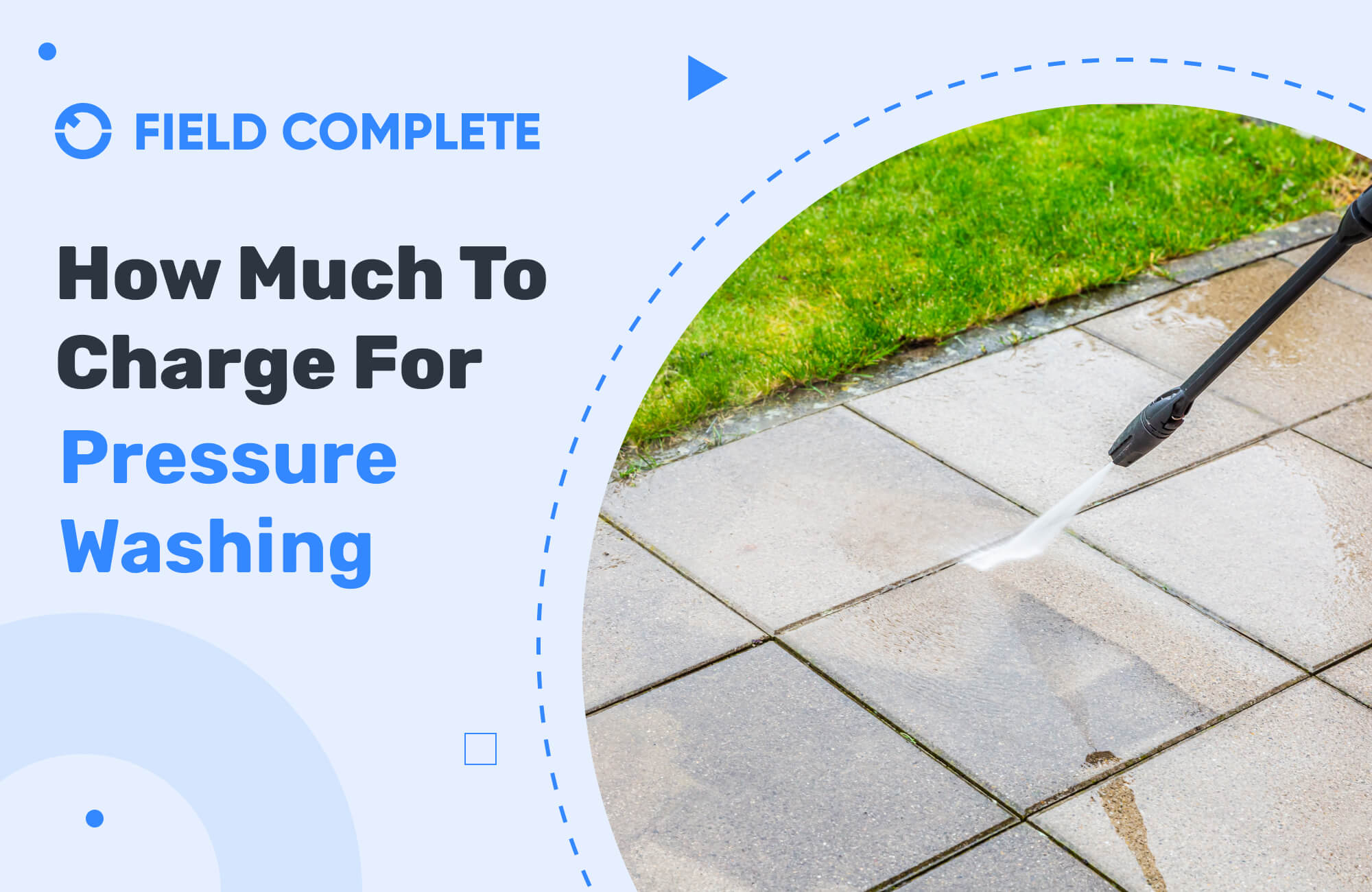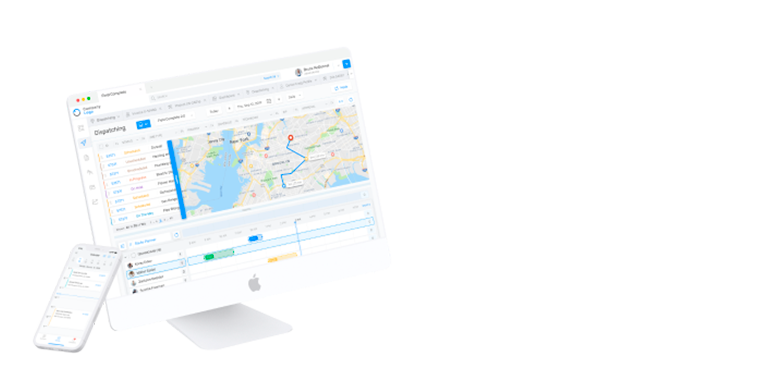As demand for pressure washing is soaring, service providers have to strike a balance between competitive rates and fair compensation. Finding a sweet spot when deciding how much to charge for pressure washing significantly impacts business success.
This article unravels the intricacies of determining how much to charge for pressure washing. You’ll gain valuable insights and practical strategies to confidently price your services.
Let’s get started.
Introduction to Pressure Washing Pricing
Understanding how to set the right price for your services allows remaining competitive. Let’s see why this is important and the factors that determine prices.
Importance of Properly Pricing Pressure Washing Jobs
The success and sustainability of your business depends on how you price your services. This achieves a delicate balance between profitability, customer satisfaction, and competitiveness.
Why properly price your pressure washing jobs?
- Ensure financial viability and business profitability
- Establish trust and credibility with customers
- Fair pricing fosters positive customer experiences
- Get adequate compensation for your time, expertise, and resources
- Allows remaining competitive in the market
Factors Influencing Pressure Washing Costs
Determining how much to charge for your services is essential for scaling up your business.
Factors that determine the costs of your services are:
- Business location
- Current market price
- The size of the work area
- Material and overhead costs
- Project complexity
- Type of surface for cleaning.
- Cleaning equipment and solutions required
- Level of care and detail required
Pricing Methods for Pressure Washing Jobs
Approach matters when pricing your services for the success of your business and the satisfaction of your customers.
Here are pricing methods you can consider.
Flat Rate Pricing
This is a straightforward and transparent approach to pricing your services. Customers are charged a fixed cost regardless of job scope or complexity. The pricing strategy is easier to understand for clients. There are no intricate calculations to determine the final cost.
A standardized price makes customers easily understand the cost of your services upfront. This fosters trust, and credibility, and eliminates pricing-related disputes. Flat rate pricing also streamlines the quoting process for quicker and more efficient transactions.
Hourly Pricing
You can also charge depending on time spent on the job. This flexible approach accommodates varying job complexities and other factors that make the work more challenging. Hourly pricing allows for handling unpredictable projects.
This pricing accounts for your expertise, labor costs, and equipment use more accurately. However, its effectiveness depends on clear communication with clients on the estimated time to complete the job.
Per Square Foot Pricing
This strategy allows accurate estimating of costs to match the total square footage of the work area. Clients get transparent and proportionate quotes that directly correlate the cost to what the job requires.
Per square-foot pricing is ideal when handling surfaces with irregular shapes.
Why?
Because it accounts for the actual space for cleaning. Customers can easily compare quotes from different service providers.
Project-Based Pricing
Lastly, you can charge your services per project. Here, you determine the cost of each job depending on its requirements and complexities. Project-based pricing considers factors such as the nature of the surface, accessibility of the area, and additional services requested by the client.
You personalize the quote accurately to reflect the time, effort, and resources for optimal results. Tailoring prices to the demands of each project delivers exceptional value to your clients. It also establishes a reputation for offering tailored solutions.
How Much to Charge for Pressure Washing Per Square Foot
One of the ways to charge for your services is per square foot. The approach is transparent, scalable and offers a direct correlation between the quote and the project size.
Let’s explore how to determine square footage and different price ranges.
Determining the Square Footage
Determining pressure washing square footage helps determine costs accurately. You may have to do this before working on garage floors, parking lots, sidewalks, or power washing decks.
Pricing the square footage requires finding out the length and width of the area. A laser distance measurer comes in handy to get accurate results. Multiply the length by the width and then multiply the total by 1.35. To find the approximate value of the square footage.
Pricing Ranges for Different Surfaces (e.g., concrete, wood, brick)
The national average cost for pressure washing is from $0.30 to $0,50 per square foot. However, the price varies depending the size and how dirty the place is. Most professionals charge per square foot although the nature of the material also determines the price.
Homes are built with different surfaces. You must apply different techniques to pressure wash the various surfaces to avoid damaging them. Some materials such as wood, bricks, and stucco need soft washing while others need a power wash. Regardless of the surface, the average price is $1 to $2.25 per linear foot.
Here are estimates of pressure washing various materials.
Material Average price range per square foot
Driveway $0,025 to $0.35
Concrete curb $0.25 to $0.60
Fence $1 per linear foot per side
Patios $0.25 to $0.35
Siding $1 to $2.25 per linear foot
Gutters $1 – $1.75 per linear foot
Pricing Guidelines for Different Pressure Washing Jobs
Each job comes with unique complexities and considerations. These warrant a thoughtful approach when pricing.
Here’s a guide on how much to charge for a pressure-washing job.
Pressure Washing a Commercial Building
A thorough evaluation of various factors is essential to pressure wash a commercial project. Evaluating the size including total square footage and height impact creates an accurate and competitive quote. Larger buildings with more stories need specialized equipment and more labor leading to a higher cost.
Surface material and condition also impact how much to charge for pressure washing a commercial building. These determine the complexity and necessary cleaning techniques. Location and building accessibility also impact how much to charge for your services.
A comprehensive assessment is essential so you accurately quote the cost of handling the task.
Pressure Washing a House
How much to charge for pressure washing a house depends on careful analysis of various things. Considering the size, type of exterior surface, extent of dirt, and location play a significant role in determining the cost of the project.
Putting these factors in mind allows for ensuring fair and transparent pricing that aligns with the unique requirements of each client’s house.
Pressure Washing a Driveway
Evaluating the square footage is a primary consideration when determining how much to charge for pressure washing driveway. Material is also essential because it determines the complexity of the job and the appropriate cleaning methods to use.
Also keep in mind the level of stains, oil spots, and mold on the surface.
Why
Because they impact the intensity of cleaning.
Other factors to consider include accessibility, travel distance to the work area, and the necessary equipment and other supplies required for the job.
Keeping these considerations in mind allows giving clients competitive quotes that cater to their particular needs.
Pressure Washing a Fence
The length and height determine how much to charge for pressure washing a fence. Material also matters because it impacts cleaning techniques and equipment. Location and accessibility are also important because they affect overall costs.
Considering these factors allows for developing appropriate quotes to extend the lifespan of your clients’ fences.
Pressure Washing a Roof
The type of material, size, and pitch impact how much to charge for pressure washing a roof. The extent of moss, algae, or mold also impacts the cost of the project. Location and accessibility also play a role in determining the overall cost of the project.
Keeping these factors in mind ensures proper pricing of your services while preserving the appearance of your client’s property.
Special Considerations in Pricing
Pressure washing jobs aren’t the same. Each has unique requirements that need special consideration. From special requirements by customers to differences in accessibility and travel distance to seasonal factors.
Here is how you can go about these when pricing your services.
Additional Services and Add-Ons
Consider customers’ requests for additional services and add-ons when pricing your services. Because customers may request extra services such as deck staining and window cleaning. Tailor bundled packages that transparently outline the costs for the extras. This will drive upselling and boost revenue for your business.
Travel Distance and Accessibility
The distance of the work site from your location and accessibility impact overall costs for a project. These contribute to how much you spend on fuel, time, and labor. To get to the job site. Accessibility impacts packing and ease of getting equipment and materials to the site. The harder it is, the more the costs.
Seasonal Factors
Demand for pressure washing services depends on the seasons. Additionally, seasons also impact operation conditions for contractors. Demand is usually high in peak seasons leading to increased value for your services.
However, consider competitive pricing and promotions during off-peak seasons to maintain a steady flow of customers.
How to Price Power Washing Jobs
Let’s delve into how to set prices for your services for customer satisfaction and sustainable growth.
Steps to Calculate a Fair Price
A systematic approach is necessary to calculate a fair price for your services. Here is how to price power washing jobs.
- Evaluate project size and level of complexity
- Determine the type of surface to work on
- Research current market rates to set a competitive price
- Factor in additional services and add-ons
- Evaluate travel distance and accessibility
- Determine overheads and profit margins
- Offer detailed quotes and estimates
- Regularly review and adjust pricing
Competitive Analysis and Market Research
Thorough competitive analysis gains insights into the pricing strategies of rival businesses. You also understand their offerings and USPs. Comprehensive market research offers a broader understanding of demand, customer preferences, and market rates.
Combining these efforts allows your pricing to align with customer expectations.
How to Bid on Commercial Pressure Washing Jobs
Securing lucrative contracts and building lasting business relationships need a strategic approach.
Here’s how to bid on commercial pressure washing jobs.
Assessing the Scope of Work
Creating successful and accurate business proposals requires assessing the scope of work. A comprehensive site evaluation and examination of surfaces for cleaning is essential before bidding on projects.
Also, determine the square footage and understand special equipment and materials for use. To present precise estimates and increase the chances of submitting successful bids.
Preparing a Professional Bid Proposal
Understanding the steps to prepare a professional bid proposal is crucial to getting customers for your services.
Here’s what to do.
- Obtain the necessary information about the job
- Conduct a thorough on-site evaluation
- Create a detailed breakdown of necessary costs
- Showcase your expertise and experience
- Address the particular needs and requirements of the client
- Format the proposal for a professional presentation
- Include realistic timelines for all milestones
- Review and proofread the proposal
- Submit the proposal before the deadline
Pressure Washing Estimate Forms and Templates
Utilizing forms and templates streamlines the bidding process and portrays professionalism. They ensure consistency in presenting details, pricing, and terms to clients to build trust and credibility. Using a pressure washer pressure washing estimate template saves time and offers a structured framework for quick responses to bid requests.
Importance of Clear and Detailed Estimates
Offering clear and detailed estimates to your clients has several benefits:
- Builds trust and credibility
- Avoids misunderstandings and misinterpretations
- Allows accurate budgeting and planning
- Showcases professionalism and competence
- Creates room for upselling opportunities
Conclusion
Determining the right price for your services requires considering various factors. From assessing the scope of work to factoring in additional services to accounting for seasons, a customer-centric price is essential for business success.
Summary of Key Pricing Strategies
Here are some key pricing strategies for your pressure washing services.
- Offer clear and detailed estimates
- Undertake competitor analysis and market research
- Use appropriate pricing strategies
- Assess the scope of work
- Understand current market rates
Emphasizing Quality Service and Customer Satisfaction
Prioritizing the delivery of exceptional service while meeting customer needs builds a strong reputation and fosters customer loyalty. Utilize pressure washing software for scheduling and invoicing to offer customers a more satisfying experience.





